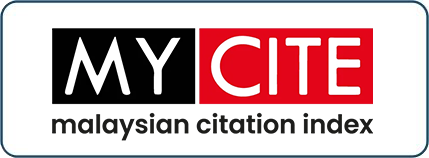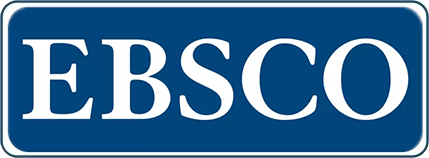Hazards In Poultry Feed Production: An Appraisal From The Halal Perspective
DOI:
https://doi.org/10.33102/jfatwa.vol27no2-SE.480Keywords:
Hazards, Poultry, Feed, HalalAbstract
Animal feed is any processed, semi-processed of raw materials or compound which are fed to animals. Poultry feed are food for farm poultry, including chickens, ducks, geese and other domestic birds (Gallus domesticus), whether it is in mash, crumbles or pellets form. Feed supply is central to all animal production systems and any factor that affects the security of the feed supply is a significant constraint to production. In Malaysia, most of the poultry feed comprises of 95% of the sources that are imported and only 5% are obtained locally. In this situation, feed producers are responsible to communicate with crop producers and at the same time connected with primary food producers involved, such as poultry breeders. These phenomena are crucial in maintaining the halal integrity along the supply chain. To produce halal food materials, it is important to make sure that the feed fed to edible animals are Ḥalālan ṭoyyiban. This paper reviews the hazards presence in poultry feed and its production which include biohazards, chemical hazards and physical hazards. In so doing, it employs library research methodology by reviewing the relevant literatures and analysed using content analysis method. Further to that, it also appraises the presence of the respective hazards from the halal perspective. From the halal point of view, the sources of human food shall not only be halal, but shall also be safe for human consumption, non-poisonous and non-hazardous to human health. In the context of poultry feed, the usage of antibiotics, GMOs with hazardous issue or potential toxicity or allergenicity, toxin contamination and presence of physical contaminants in poultry feed, if not properly controlled and regulated seriously, adverse effects might take place in human and this is indeed not in line with the goal of the Shariah to safeguard the interests of human and the universe, to protect life and lineage, and to bring benefits and repelling harms. Nevertheless, considering that contaminants are present everywhere, and that total elimination is almost impossible, taking proactive actions to reduce their presence to the minimum level possible is in compliance with the spirit of Maqasid Shariah. This could be done by putting in place a comprehensive legislation for the control of several of these chemical compounds, pathogens and physical contaminants in poultry feed, or by implementing feed safety management system such as HACCP in feed plants. In addition, to protect the interest of the Muslim consumers particularly in Malaysia, it is also recommended that a Halal standard for Poultry Feed Production should be developed.
Downloads
References
Alserhan, B. A. (2010). Islamic branding: A conceptualization of related terms. Journal of Brand Management, 18(May), 34–49. http://doi.org/10.1057/bm.2010.18
Barton MD. (2000). Antibiotic use in animal feed and its impact on human healt. Nutr Res Rev. 2000;13(2):279–99.
Bernama. (2008). HDC Is Not Take Over Jakim’s Authority, Says Ahmad Zahid. Retrieved March 23, 2015, from http://www.bernama.com/bernama/v3/news.php?id=324872
Borràs, S., Companyó, R., Granados, M., Guiteras, J., Pérez-Vendrell, A. M., Brufau, J., ... Bosch, J. (2011). Analysis of antimicrobial agents in animal feed. TrAC Trends in Analytical Chemistry, 30(7), 1042–1064. http://doi.org/10.1016/j.trac.2011.02.012
Bradley D. (2010). Evaluation of the EU Legistative Framework in the Field of GM Food and Feed. European Commission Directorate General for Health and Consumers.
Bryden WL. (2012). Mycotoxin contamination of the feed supply chain: Implications for animal productivity and feed security. Anim Feed Sci Technol.173(1–2):134–58.
Cavaglieri, L. R., Keller, K. M., Pereyra, C. M., González Pereyra, M. L., Alonso, V. a., Rojo, F. G., ... Rosa, C. a R. (2009). Fungi and natural incidence of selected mycotoxins in barley rootlets. Journal of Stored Products Research, 45, 147– 150. http://doi.org/10.1016/j.jspr.2008.10.004
Cockburn A, Crevel RWR, Debruyne E, Grafstroem R, Hammerling U, Kimber I, et al. (2004). Assessment of the safety of foods derived from genetically modified (GM ) crops. 2004;42:1047–88.
Collignon P, Wegener HC, Braam P, Butler CD. (2005). The Routine Use of Antibiotics to Promote Animal Growth Does Little to Benefit Protein Undernutrition in the Developing World. Food Saf. 2005;1007–14.
Department of Standards Malaysia. (2005). MALAYSIAN STANDARD.
Department of Standards Malaysia. (2008) MALAYSIAN STANDARD MS20:2008 Poultry Feeds - Specification (Fourth Revision). 2008.
Department of Standards Malaysia. (2019). Malaysian Standard for Food (MS1500:2019)
DuPont, H. L., & Steele, J. H. (1987). The human health implication of the use of antimicrobial agents in animal feeds. Veterinary Quarterly, 9(March 2015), 309– 320. http://doi.org/10.1080/01652176.1987.9694119
Gizzi, G., Von Holst, C., Baeten, V., Berben, G., & Van Raamsdonk, L. (2004). Determination of processed animal proteins, including meat and bone meal, in animal feed. Journal of AOAC International, 87(May), 1334–1341.
Gregory, N. G. (2008). Animal welfare at markets during transport and slaughter. Meat Science, 1(80), 2–11.
Gulland A. (2013). Antimicrobial resistance will surge unless use of antibiotics in animal feed is reduced. BMJ Br Med J (Clinical Res ed). 2013;347:f6050.
Kan, C. a., & Meijer, G. a L. (2007). The risk of contamination of food with toxic substances present in animal feed. Animal Feed Science and Technology, 133, 84–108. http://doi.org/10.1016/j.anifeedsci.2006.08.005
Khattak, J. Z. K., Mir, A., Anwar, Z., Wahedi, H. M., Abbas, G., Khattak, H. Z. K., & Ismatullah, H. (2011). Concept of Halal food and biotechnology. Advance Journal of Food Science and Technology, 3(5), 385–389.
Ksenija, D. N., Dobrila, P. J.-D., Ljiljana, M. J.-M., & Bozidar, M. S. (2011). Diagnosis Of Mycotoxicoses In Veterinary Medicine. In Proceedings of Natural Science (Vol. 120, pp. 221–230). http://doi.org/10.2298/ZMSPN1120221N
Lack, G. (2002). Clinical risk assessment of GM foods. In Toxicology Letters (Vol. 127, pp. 337–340).
Maciorowski, K. G., Herrera, P., Jones, F. T., Pillai, S. D., & Ricke, S. C. (2007). Effects on poultry and livestock of feed contamination with bacteria and fungi. nimal Feed Science and Technology, 133, 109–136. http://doi.org/10.1016/j.anifeedsci.2006.08.006
Mahadzirah M, Nor Azman MA. (2016). Quality of Life Maqasid Shariah Approach. 1st ed. Terengganu, Malaysia: Penerbit UniSZA; 161 p.
Muhammad Al-Tahir IA. (2006). Ibn Ashur: Treatise on Maqasid al- Shariah. 1st ed. Kuala Lumpur, Malaysia: Islamic Book Trust; 2006. 489 p.
Pariza MW, Cook M. (2010). Determining the safety of enzymes used in animal feed. Regul Toxicol Pharmacol. 2010 Apr;56(3):332–
Rather, I., Seo, B., Kumar, V., Choi, U.-H., Choi, K.-H., Lim, J., & Park, Y.-H. (2014). Biopreservative potential of Lactobacillus plantarum YML007 and efficacy as a replacement for chemical preservatives in animal feed. Food Science and Biotechnology, 23(1), 195–200. http://doi.org/10.1007/s10068-014- 0026-3
Rittgers C, Wahab AG. (2014). Malaysia Grain and Feed Annual. GAIN Report.
Ruqayyah, T. I. D., Jamal, P., Alam, M. Z., Mirghani, M. E. S., Jaswir, I., & Ramli, N. (2014). Application of response surface methodology for protein enrichment of cassava peel as animal feed by the white-rot fungus Panus tigrinus M609RQY. Food Hydrocolloids, 42, 298–303. http://doi.org/10.1016/j.foodhyd.2014.04.027
Sapkota, A. R., Lefferts, L. Y., Mckenzie, S., & Walker, P. (2007). Review What Do We Feed to Food-Production Animals ? A Review of Animal Feed Ingredients and Their Potential Impacts on Human Health, 115(5), 663–671. http://doi.org/10.1289/ehp.9760
Sapkota, A. R., Lefferts, L. Y., McKenzie, S., & Walker, P. (2007). What do we feed to food-production animals? A review of animal feed ingredients and their potential impacts on human health. Environmental Health Perspectives, 115(5), 663–670. http://doi.org/10.1289/ehp.9760
Snijders, J. M. A., & Van Knapen, F. (2002). Prevention of human diseases by an integrated quality control system. In Livestock Production Science (Vol. 76, pp. 203–206).
Sobry AA, Ramly MM, Adnan AS. (2015). Pantau lebih ketat ladang ternakan. Berita Harian. 2015;8.
Streit, E., Schatzmayr, G., Tassis, P., Tzika, E., Marin, D., Taranu, I., ... Oswald, I. P. (2012). Current situation of mycotoxin contamination and co-occurrence in animal feed focus on Europe. Toxins.
United Nations Economis and Social Commission for Asia and the Pacific ESCAP. (2014) Prospects of Feed Crops in Southeast Asia: Alternatives to Alleviate Poverty Through Secondary Crops‟ Development. In: Proceedings of the Regional Workshop held in Bogor, Indonesia. Indonesia: United Nations ESCAP; p. 220.
Uppal, D., Ilyas, S., & Sikka, S. (2002). Quality and Safety of Animal Feeds in India. Retrieved from http://unapcaem.org/Activities Files/A16/Animal Feed & Quality.pdf
Van der Spiegel, M., Van der Fels-Klerx, H. J., Sterrenburg, P., Van Ruth, S. M., Scholtens-Toma, I. M. J., & Kok, E. J. (2012). Halal assurance in food supply chains: Verification of halal certificates using audits and laboratory analysis. Trends in Food Science and Technology, 27(2), 109–119. http://doi.org/10.1016/j.tifs.2012.04.005
Verstraete F. (2013). Risk management of undesirable substances in feed following updated risk assessments. Toxicol Appl Pharmacol. 2013;270(3):230–47.
Verstraete, F. (2013). Risk management of undesirable substances in feed following updated risk assessments. Toxicology and Applied Pharmacology, 270(3), 230– 247. http://doi.org/10.1016/j.taap.2010.09.015
Zadernowski MR, Verbeke W, Verhé R, Babuchowski A. (2001). Toward Meat Traceability Critical Control Point Analysis in the Polish Pork Chain. J Int Food Agribus Mark. 2001;12(4):5
Zhang, X., Zhang, Y., Chen, H., Yang, J., & Wang, W. (2007). Study on spatial autocorrelation in China’s animal feed industry. New Zealand Journal of Agricultural Research, 50(March 2015), 831–838. http://doi.org/10.1080/00288230709510357
Act
Animal Feed Act, 2009
Downloads
Published
Issue
Section
License
Copyright (c) 2022 Amalina Mohd Ashraf, Fadilah Abd Rahman

This work is licensed under a Creative Commons Attribution 4.0 International License.
The copyright of this article will be vested to author(s) and granted the journal right of first publication with the work simultaneously licensed under the Creative Commons Attribution 4.0 International (CC BY 4.0) license, unless otherwise stated.















